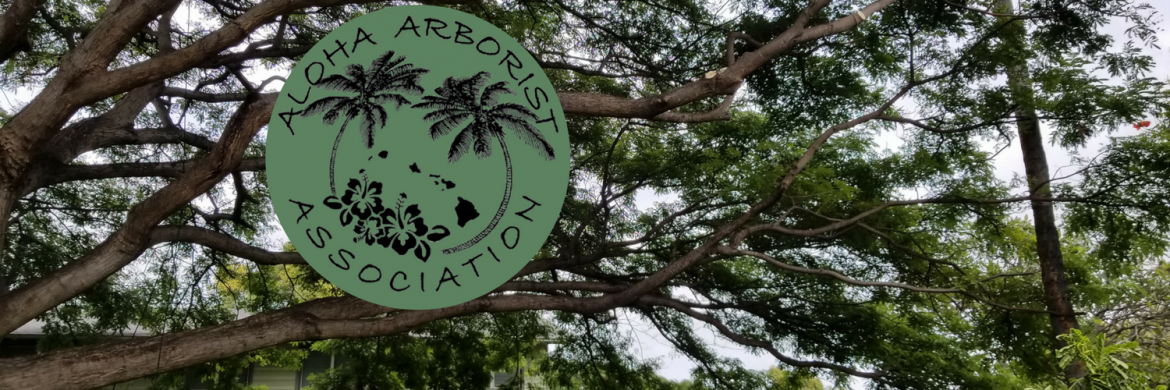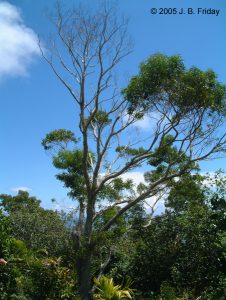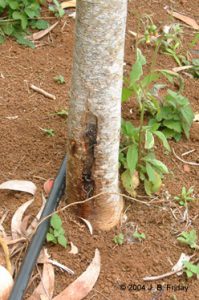Koa Wilt – Fusarium oxysporum
All photos by Dr. J.B. Friday, University of Hawai’i, CTAHR
Description
The fungus Fusarium oxysporum lives in and blocks the xylem of Acacia koa and Acacia koaia, causing major dieback or tree death.
Distribution
Hawaii Island, Maui, Oahu, and Kauai. This wilt disease was found in koa trees along Mauna Loa Strip Road at elevations up to 7,000 feet but most diseased trees are found below 3,000 feet elevation.
Symptoms and Damage
The soil-borne fungus enters through the trees’ roots, travels up the stem and branches, and blocks vascular tissue (conducting tissue), cutting off water supply to the leaves. The leaves then wilt and turn brown. Early symptoms include yellowing and drooping leaves on a single branch or canopy section. Sapwood is usually stained darkly; infected roots and cambium may also show staining. The bark may split, or stems and branches may ooze sap. Infected trees may be attacked by beetles.
Some strains of the fungus are weakly virulent and cause little to no damage. Where virulent strains are present in plantation settings, there may be mortality of up to 90% of the trees over the course of several years. Older and larger trees may be able to wall off or “compartmentalize” the infection and retain a partial live crown.
Control
It is important to avoid bringing infected soil or plant parts to areas where the disease is absent. Shoes, tools, and truck tires used in infected sites should be cleaned thoroughly after leaving the site. Tools such as axes, chainsaws, and machetes should be sterilized after use on infected trees. Fusarium oxysporum has occasionally but seldom been found in seed of infected trees. In general, it is best to use locally collected seed from superior individual trees whenever possible. To avoid infection in the nursery, growers should sterilize planting containers before reusing.
Additional Resources
Friday, JB and Nicklos Dudley, “Hawai’i Forestry Pests & Diseases: Koa Wilt.” University of Hawaii – College of Tropical Agriculture and Human Resources (Retrieved 12/14/16). URL: http://www.ctahr.hawaii.edu/forestry/disease/koa_wilt.html
Shiraishi, Ayami, “Plant Disease: AFLP, Pathogenicity, and VCG Analyses of Fusarium oxysporum and F. pseudocircinatum from Acacia koa.” APS Journals. August 2012, Vol.96, No.8, pp.1111-7 (Retrieved 12/14/16). URL: http://apsjournals.apsnet.org/doi/abs/10.1094/PDIS-06-11-0491


